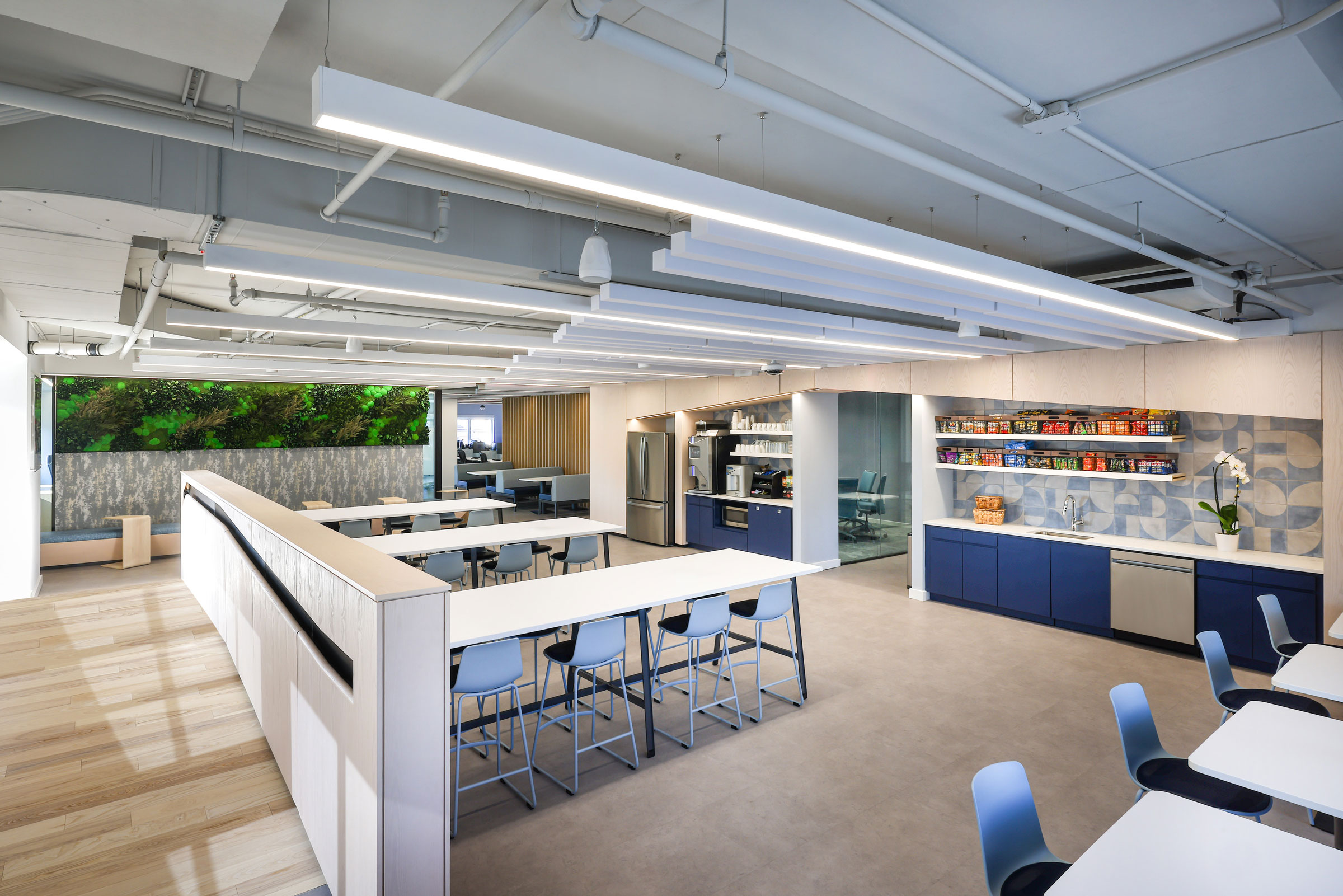Story at a glance:
- LED lights have been rising in popularity consistently in recent years.
- LED lighting consumes significantly less energy than incandescent and CFL bulbs.
- LED lights are adaptable, directional, dimmable, and ever-improving compared to other options.
The technology behind LED lighting has been around for decades, but only recently has it become affordable and reliable enough to rise in popularity so dramatically. From energy efficiency to having a long lifespan, LED lights are both environmentally responsible and budget-friendly.
Light-emitting diodes, or LEDs, are a solid-state lighting solution that use a semiconductor to convert electricity into light, according to the US Department of Energy. This means LED lights do not require a breakable glass bulb like traditional lights.
Plus, LED lights can be used anywhere—from sports arenas to industrial settings to residential projects. They perform reliably and safely in various design applications.
What is LED Lighting?
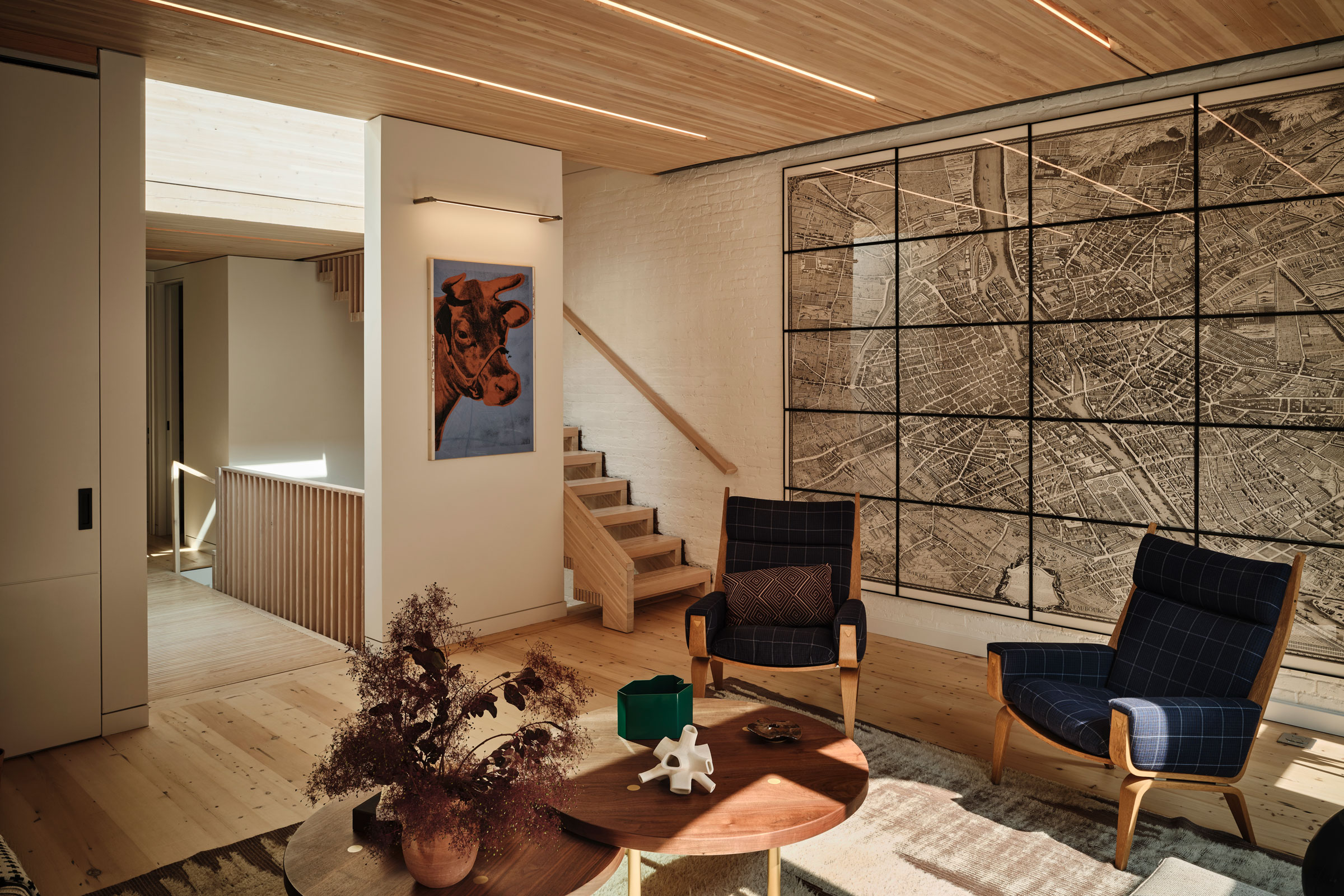
The living room of the Brooklyn Mass Timber House features floors recycled from the original timbers and integrated lighting from Stickbulb. Photo by Frank Frances
LED stands for light emitting diode. LED lighting products produce light up to 90% more efficiently than incandescent light bulbs, according to energystar.gov.
LED lights work by passing an electrical current through a microchip that illuminates the tiny light sources we call LEDs, which rarely burn out.
The first LEDs were created in the 1920s and have evolved dramatically to the lights we know today. do not “burn out” or fail. White LEDs for residential use came on the market in the early 2000s and quickly became popular in schools, offices, and health care environments, too. By 2019 LED lighting had become the most popular source of lighting, as designers continue to discontinue their use of halogen and fluorescent lighting.
Common Areas to Use LED Lights

Skylab chose to install toe-kick LED lighting in this boutique resort by Cascade Bungalows. The Skylab team ethically and sustainably sourced building materials, furniture, and more by collaborating with local firms and artisans. Photo by Mark Mediana
LED lighting can be used in any area of a residential project. Many designers and homeowners are turning to LEDs to set a tone in a space while also providing extra light. Here are just some of the areas where people are using LED lights:
Under cabinets. LED strip lighting is popular under cabinets and in other potentially dark areas, both to provide better lighting over counter space and also to provide a feeling of luxury, like in a showroom.
Within shelves. Lighting in shelves brings light and warmth to dark offices or helps you find that hidden book.
In the bathroom. LED lights are popular along vanities and mirrors.
Dark hallways. Bring light to dark hallways or staircases with LEDs.
Behind the TV. Add color and light and set the tone in the bedroom or living area.
LED Lights Types
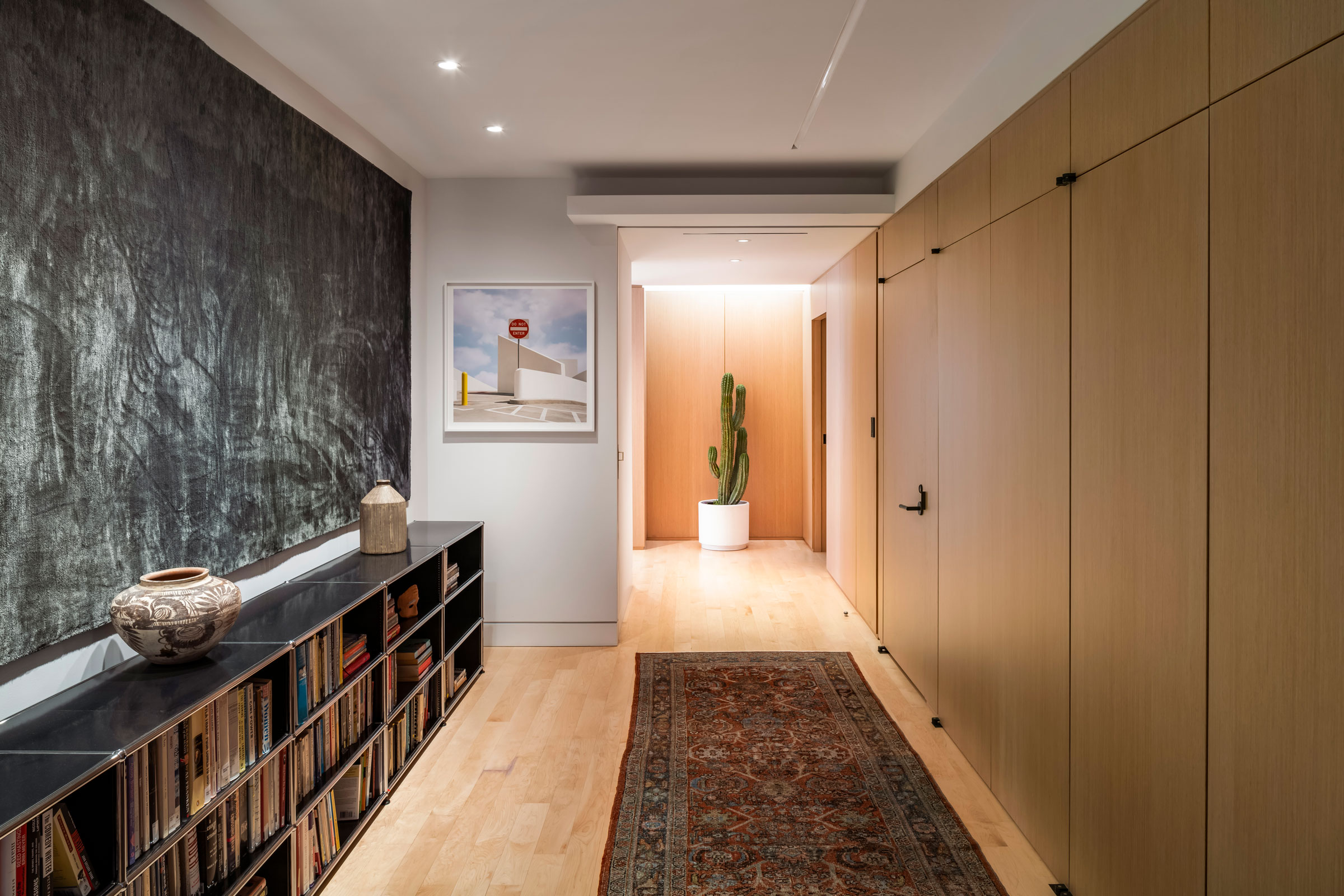
This Gluck+ California house features all LED lighting. Photo by Paul Vu Photography
Many types of LED lighting exist today, whether you want to choose an LED lighting strip, lighting in a fun shape, or a specific bright color. LED bulbs themselves come in four primary categories: A-shape, reflectors, decorative, and specialty, according to GE.
A-Shape
A-shape LEDs are the most common and often seen throughout homes. These are conical in shape and cast a more defined beam. A-shape LEDs easily fit in most lamps and are commonly used there or anywhere you might find a traditional light bulb. They instantly offer full light upon switching on, according to Philips, and they’re great for decorative and ambient lighting in retail outlets, hotels, restaurants, multi-unit residences and government buildings.
Reflectors
Reflectors are often used for outdoor lighting and commonly called flood lights or spotlights.
Reflectors are quite literally defined by the LED reflectors that sit over the LED to alter the beam of light. They are an affordable and easy-to-use solution for many areas, though they don’t offer as much control as LED lenses, according to RS Online.
Decorative
Decorative LEDs can bring life and personality to wall sconces, chandeliers, or virtually any exposed-bulb fixtures. Often decorative LEDS are smaller in order to fit within a fixture, but designers can find them in a wide variety of styles, whether you want a classic globe or vintage vibe.
Specialty
Specialty LED lighting is a catchall for the remaining, more special type of lights. This includes everything from antique style bulbs to lighting for very specific fixtures.
How Do LEDs Compare to Other Lighting Options?
Before we take a look at some of their benefits, let’s take a moment to explore how LEDs compare to other popular lighting options—namely incandescent, halogen, and fluorescent bulbs.
LED vs Incandescent
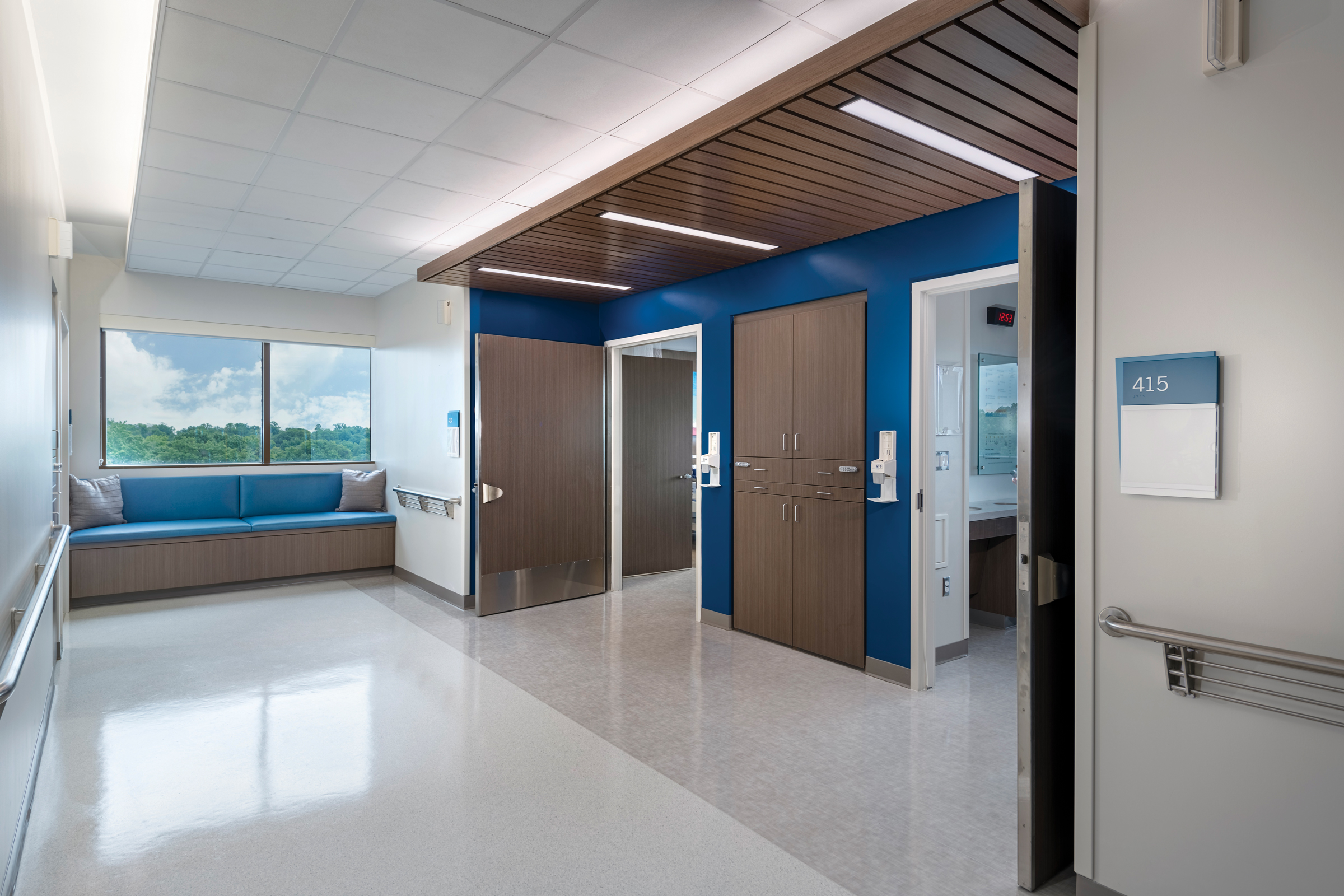
A mix of cove lighting and ambient linear products from H.E. Williams are used for low-glare lighting in the hallway of fourth floor patient rooms at the Virginia Hospital Center in Arlington. Photo courtesy of H.E. Williams
LEDs use at least 75% less energy and last 25 times longer than incandescent lighting, according to energy.gov—and in most cases, they also offer better lighting control and design flexibility.
LED lighting can allow an architect’s design to take center stage, blending in or bringing particular elements to life. “The best lighting tools are the ones an architect can apply to show off the architecture, versus the product as itself,” Dan Kohnen, director of commercialization at H.E. Williams, told gb&d in a previous article. Kohnen has been working with H.E. Williams—a more than century-old lighting company—since 1999 and has watched the design world evolve to incorporate more LED lighting and human-centric design.
Incandescent lights cost less than LED lights, but they will need to be replaced more frequently—and finding replacements is growing increasingly more difficult. This is because the manufacture and sale of incandescent lights (specifically those that generate less than 45 lumens per watt) was banned in 2023 as a result of changes to the DOE’s minimum efficiency standards.
Halogen vs LED
Halogen lights may provide beautiful color but at a short lifespan, averaging between 2,000 and 4,000 hours before requiring replacement. Compared to traditional incandescent bulbs, this is a marked improvement, but it still falls far short of the 50,000 to 100,000 hours that most LEDs average.
In addition to their shorter lifespan, halogen bulbs also waste significantly more energy in the form of heat than LEDs, with most halogen bulbs converting 80% to 90% of their energy into heat. LEDs, on the other hand, only convert about 5% of their energy into heat. As with incandescent bulbs, this low energy efficiency resulted in the nationwide ban on the manufacture and sale of most halogen bulbs in 2023.
LED vs Fluorescent Bulbs

Energy Focus’ 200D and 300D Series LED Tubes come in frosted or clear. The 200D Series LED’s use 15-18 watts per lamp as opposed to the 32-36 watts per lamp used by fluorescents. Photo courtesy of Energy Focus
As perhaps the most similar to LEDs in terms of energy efficiency, fluorescent bulbs have long reigned as the lighting-of-choice in spaces like offices, schools, warehouses, and garages—where they are still common even to this day.
There are two basic types of fluorescent bulbs: compact fluorescent and linear fluorescent.
LED vs Compact Fluorescent
Compact fluorescent bulbs, or CFLs, are a type of energy-saving lighting solution that rely on gas reactions to produce visible light. CFLs feature a folded tube that contains a mixture of both argon and mercury vapor; the inside of this tube is coated with a thin layer of fluorescent paint. When the light is switched on, the CFL’s internal ballast system sends an electric current through the tube in order to excite the gasses and produce ultraviolet light. The coating of fluorescent paint serves to then absorb those UV rays and emit visible light through the tube’s glass envelope.
CFLs are considered to be relatively efficient as they use 70% less energy and produce 70% less heat than incandescents do. CFLs have an average lifespan of 10,000 to 15,000 hours, significantly outperforming the 1,000 hour rating of most incandescent bulbs, but again falling short of most LEDs.
CFLs are set to be banned—and have already been banned in some states—as a result of changing minimum efficiency standards.
LED vs Linear Fluorescent
Linear fluorescent bulbs are functionally identical to CFLs and differ only in terms of shape; instead of the traditional oblong bulb or twisted-tube shape, linear fluorescent lights take the form of long tubes. Linear fluorescent lights use the same amount of energy as CFLs but have a much more variable lifespan ranging anywhere from 6,000 to 60,000 hours, meaning they are technically capable of lasting as long as some LEDs. This variability is largely due to their manufacturing, operating conditions, and the type of control circuit they use.
Like CFLs some linear fluorescent bulbs are in the process of being banned in certain states, namely Vermont and California.
How Do LED Lights Work?
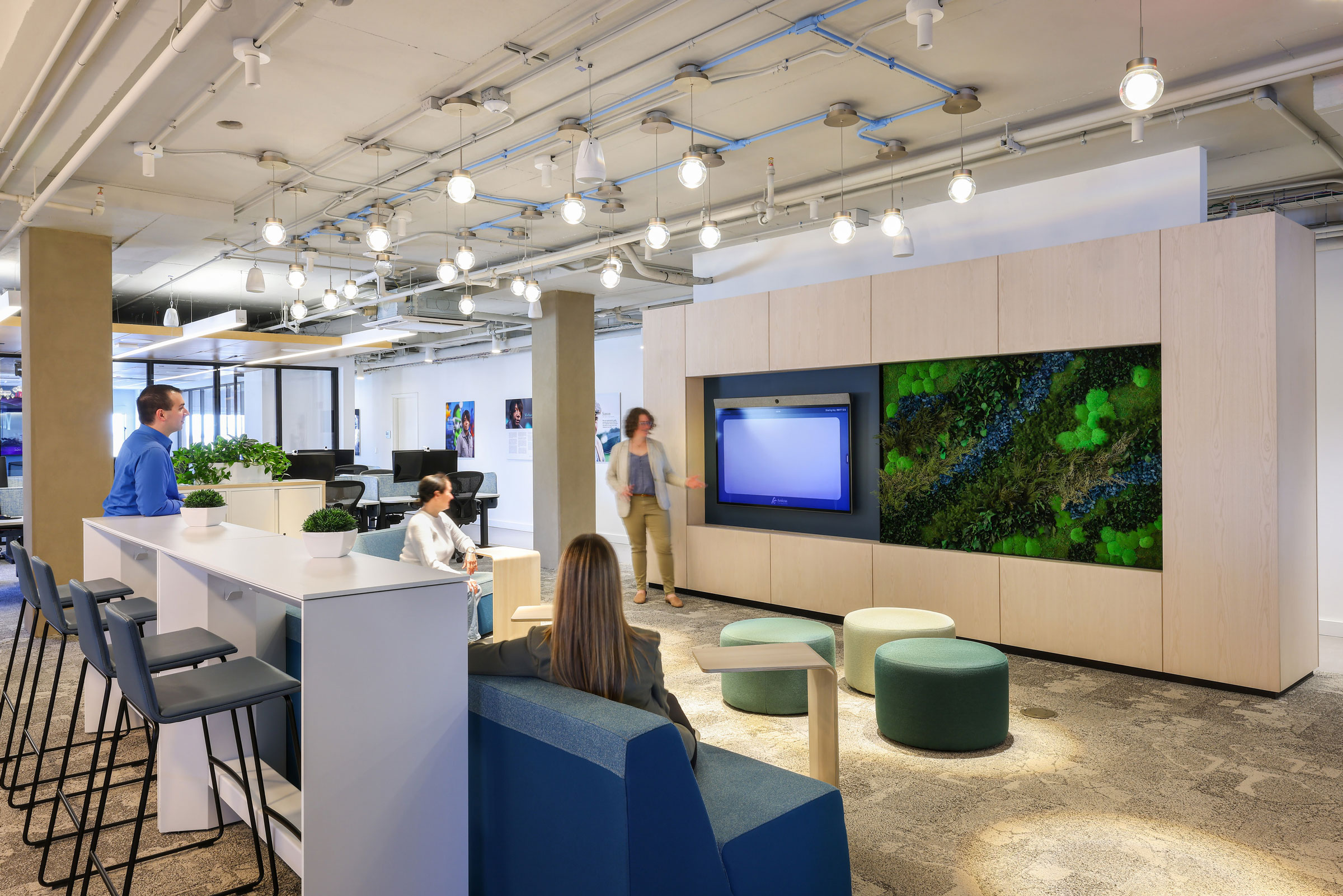
Ware Malcomb designed the new Amicus Therapeutics headquarters to include a large, open collaboration space with preserved plants on wall, LED lighting, and low embodied carbon materials in flooring and other spaces. Photo by Chris Lo Bue Photography
LEDs are basically tiny light bulbs that fit into an electrical circuit. They don’t have delicate filaments that burn out like incandescent bulbs do, and they don’t get super hot. They also use less energy, reducing the cost of that electricity bill.
LED lights are illuminated by the movement of electrons in a semiconductor material. According to How Stuff Works, a semiconductor is made of a positively charged and a negatively charged component. The positive layer has openings for electrons, and the negative layer has free electrons floating around in it. When an electric charge strikes the semiconductor, it activates the flow of electrons from the negative to the positive layer. Those excited electrons emit light as they flow into the positively charged holes.
18 Benefits of LED Lights
The benefits of LED lights are many, from saving homeowners money in the long run to being able to provide stronger light in a variety of colors. These are just some of the top benefits of LED lights.
1. Energy-Efficient
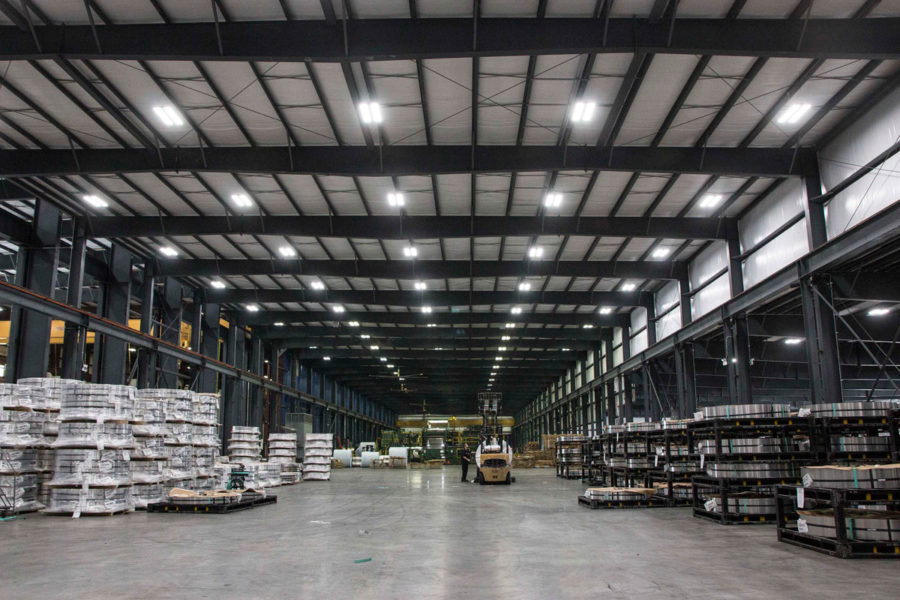
LED lights like these ones by Flex Lighting Solutions have transformed countless spaces, including Delaco Steel. Photo courtesy of Future Energy Group
LED lights use up to 85% less energy than traditional bulbs, according to The New York Times. This means LEDs produce savings in electricity costs and simply do well by the environment.
In 2007 Congress passed the Energy Independence and Security Act, which helps the US stay on track with the global shift toward LED and other energy-efficient lighting solutions for everyday light bulbs.
2. Long Lifespan
LEDs use dramatically fewer watts than traditional bulbs to produce bright light, which means they also last much, much longer.
Most LEDs last a minimum 25,000 hours, according to NOPEC—a nonprofit energy supplier in Northeast Ohio—but some boast a lifespan between 50,000 and 100,000 hours. NOPEC says if you were to keep your LED bulb on all day every day it would be about 15 years before you’d have to replace the bulb.
3. Return on Investment

In the Big Sandy Independent School District, LED Lights by Energy Focus brought significant energy savings to the schools. Photo courtesy of Energy Focus
As LEDs become more common, individuals and the US as a whole will notice significant energy savings. According to the US Department of Energy, “Switching entirely to LED lights over the next two decades could save the US $250 billion in energy costs, reduce electricity consumption for lighting by nearly 50%, and avoid 1,800 million metric tons of carbon emissions.”
E3 used Energy Focus LED lights to retrofit the Big Sandy Independent School District in Eastern Texas in 2016. “Cost was a major component for Big Sandy. The LED’s use 15 to 18 watts per lamp as opposed to the 32 to 36 watts per lamp used by the fluorescents. So it saves the schools money and they get a good return on investment,” Tim Evans, vice president of E3, told gb&d.
4. Low Radiant Heat
Among the benefits of LED lighting is the fact that they radiate very little heat—particularly compared to CFL and incandescent lights. According to the US Department of Energy, incandescent bulbs release 90% of their energy as heat and CFLs release about 80% of their energy as heat in comparison to LEDs. This makes LED lights less hazardous, particularly in terms of fire safety.
Another exciting new development in LED physics is the concept of running LEDs in reverse to create a cooling effect, says Robert Pullman, a lighting industry veteran with over 30 years of experience in every aspect of the lighting industry. Pullman previously shared some of his expertise with gb&d. “Recently it was demonstrated that if you run LEDs backward—rather than doing nothing, as one would expect from a diode—you achieve a very short-range cooling effect to the tune of 6W/m2,” he says.
“Projections forecast cooling capacity in the realm of 1000W/m2. This could be achieved in the future by actually using the LEDs themselves to draw heat away from the processor which opens the door to improved heat performance in wearables, mobile devices, and more,” Pullman says.
5. Bright, Intense Light
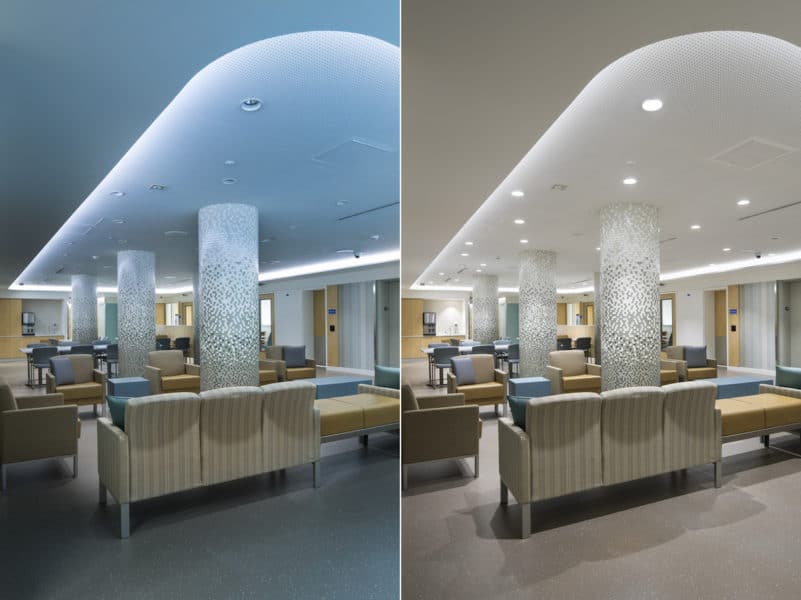
The Swedish Medical Center-Ballard’s Medical Behavioral Health Unit lacked daylight, so ZGF utilized tunable LED lighting. Photo by Benjamin Benschneider Photography
LEDs do not compromise brightness or intensity for energy efficiency. They compete with incandescent and CFL bulbs in terms of brightness, making them a good addition to workspaces where bright light contributes to productivity.
6. Instantaneous Light
Unlike fluorescent or incandescent lights LED light fixtures have no strike delay. This means that as soon as the switch is flipped LED lights will turn on to full brightness rather than gradually getting brighter over time. While not the most impressive of advantages, this lack of strike delay is still a convenient quality that makes LEDs incredibly useful in environments that may be unsafe in momentarily low-lit conditions.
7. Design Flexibility

Light tree. Photo courtesy of Tivoli
The structure of LED lights allow them to be used both functionally and artistically. In spaces of all kinds LED lights offer design flexibility. In the Yotel NYC, Focus Lighting utilized LED lights in all kinds of applications, from pin spotlights to floor lamps to lit ceiling panels, to adhere to the hotel’s strong brand identity.
In the Broadway Lounge in the New York Marriott Marquis, Tivoli delivered two 15-foot light “trees” with branches reaching out from 21 feet to more than 46 feet using an exquisite inlay of linear light.
8. High Color Rendering Index
Many LED lighting options offer a very high Color Rendering Index (CRI), which means they reveal the true color of whatever they illuminate.
Philips, one of the leading LED lighting companies, makes LED lights with a CRI of at least 80 compared to natural light’s 100. This allows consumers at home to predict how their outfit will look when they step outdoors, for example.
The high CRI of LEDs is also useful in broadcasts, where bright and color-accurate light allows nighttime sports games to look vibrant and real, even on television.
9. Lighting Controls
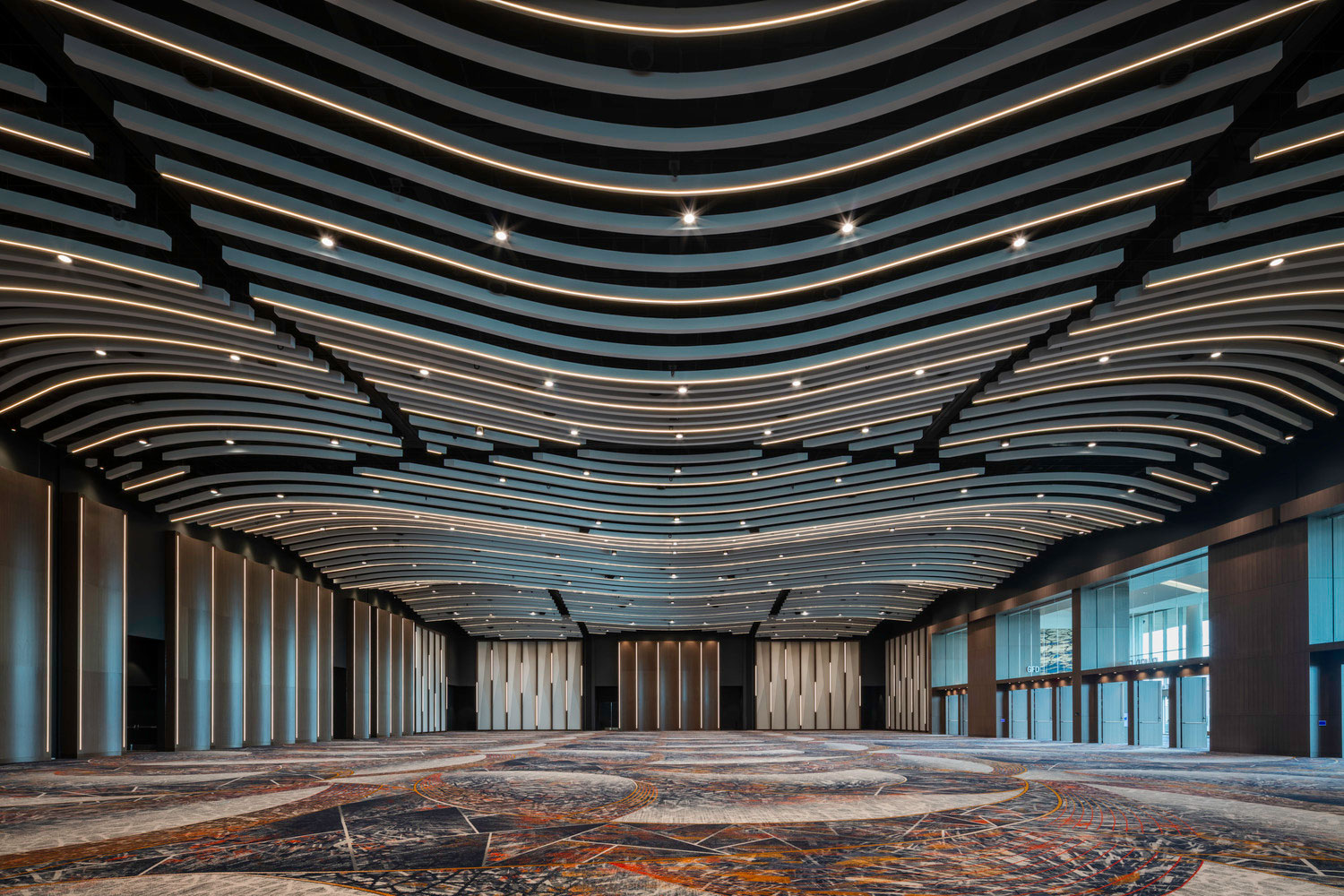
Lighting controls from ETC ensure the Baird Center’s LED lighting adjusts for occupancy and daylight. Photo by C+N Photography
One of the most convenient aspects of LED lights is the high degree of control they offer over things like brightness. Many LEDs are dimmer compatible (a feature they share with incandescent and CFL bulbs), a characteristic that leads to increased energy savings and allows the light to adjust to suit the needs of a space throughout the day.
In addition to heightened brightness controls, LEDs can also be integrated into whole-building lighting control systems or equipped with sensors that allow them to adjust accordingly to factors like daylight and room occupancy, further maximizing energy efficiency. This was something TVS Architecture and Interior Design took advantage of when designing the Baird Center expansion, which uses an ETC control system designed by Enterprise Lighting & Control to effectively manage all lighting fixtures.
Built around ETC’s Unison Paradigm suite of lighting controls, the Baird Center’s LED lighting system allows users to control exhibit hall lights via wall-mounted Paradigm Touchscreens, while a central Virtual Touchscreen (VTS) in the building’s control room provides an even higher level of granular control. “The VTS gives them the ability to select individual lights in the exhibit hall, dim them and set levels for events. It’s got multi-level control, quadrant control of each level, and then individual fixture control as well,” shares Palmer. “It gives them a lot of flexibility and was really exciting for the exhibit group,” says Bryan Palmer, manager of controls and lighting applications for Enterprise.
The high degree of control offered by LED lights makes them an ideal solution for spaces—like offices, educational institutions, and health care facilities—that must accommodate a wide range of user preferences.
10. Directional Light
By their very nature, LEDs emit light in one direction instead of all around them.
This 180-degree illumination allows the light to be more precise and useful—perfect for recessed and task lighting—and contributes to energy savings because no light energy is wasted or trapped.
11. Range of Colors

Cleveland Clinic prioritizes patients and designs health care systems that work. The organization recently replaced all of their facilities’ overhead lighting with LEDs. Photo courtesy of Cleveland Clinic
LEDs come in many colors, with surprising and increasingly impressive accuracy in terms of color matching. In one of the rising wellness design trends of today, LEDs perform a crucial role. In accordance with people’s circadian rhythms, LEDs can be programmed to adjust in color and warmth throughout the day.
It was partially for this reason that the Cleveland Clinic, a nonprofit academic medical center with locations all over the world, recently replaced all of their overhead lighting with LEDs. “Patients can change the color to help calm and relax them,” Travis Tyson, director of healthcare design studio for Cleveland Clinic, previously told gb&d.
Tivoli‘s Litesphere True RGB+W can be used to illuminate public spaces with over 16 million color choices. LEDs have come a long way since 1976, when electrical engineer Thomas P. Pearsall invented a bright, high-efficiency LED optimizing transmission wavelength for optical fiber, Tivoli’s Pullman says.
He says the invention changed the design world. “Pearsall’s LED is not only useful in communications, but Fiber Optic Drops or Star Curtains have also been used by the entertainment and event industries for decades. These industries use CYM (Cyan, Magenta, Yellow), color mixing wheels, and DMX-controlled illuminators to create breathtakingly realistic, simple star fields as well as custom patterns, graphics, and logos. Finally, in 2014, Japanese Nobel laureate and co-winner of the Nobel Prize in Physics Isamu Akasaki invented the world’s first efficient blue light-emitting diodes using gallium nitride.”
12. Sturdy
LEDs are extremely durable because they utilize a semiconductor material rather than a filament—the part that burns out in incandescent and halogen bulbs—or the high-voltage electrical parts that typically cause fluorescent lights to fail.
The light-emitting diode is a tiny chip enclosed in a plant epoxy, which makes LEDs far sturdier than traditional incandescent and fluorescent bulbs or neon tubes, according to the Department of Energy.
13. Great in Emergencies
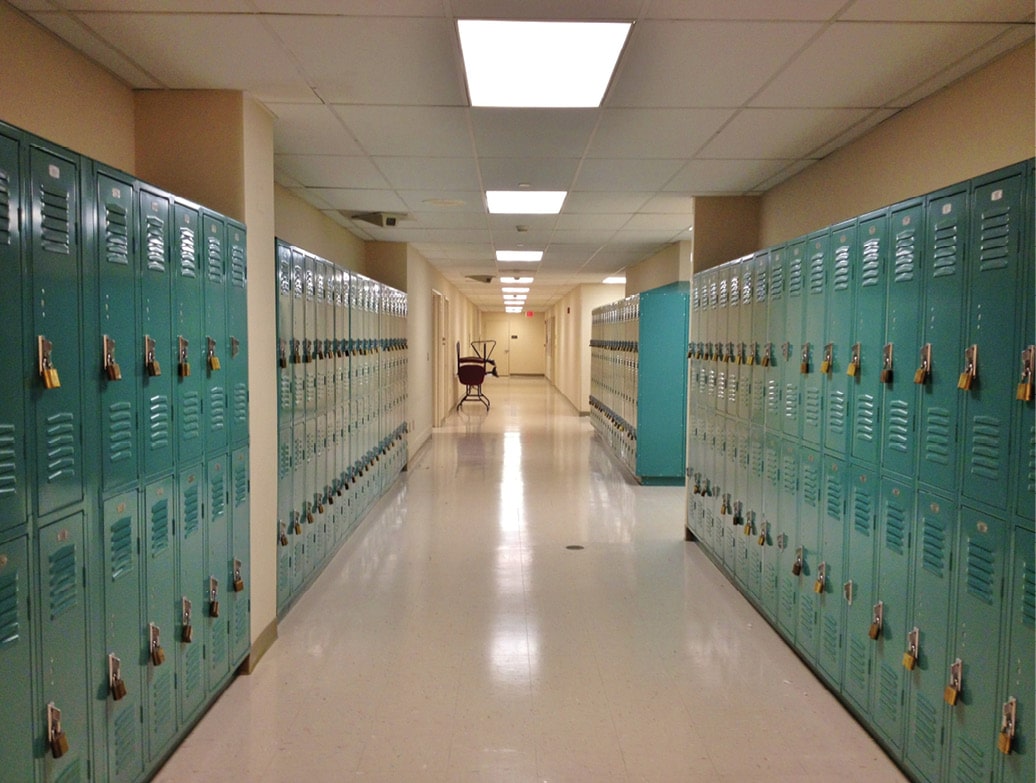
One of the benefits of LED lighting is that its brightness and long life makes it a great option for emergency lighting in schools and other contexts. Photo courtesy of Fulham
Because LED lighting provides bright light at such low wattage and can therefore last a very long time, they are a great solution for emergency lighting.
14. Environmentally Friendly
LEDs do not contain mercury like CFLs and if their aluminum heat sinks are recycled, their life cycle impact can be noticeably reduced.
Overall their energy savings and basic construction allow LEDs to win the ticket for most environmentally friendly light, according to a three-part Energy Department-funded study.
15. Operable in Many Climates

Flex Lighting Solutions’ Essentials Series 4.0 LED High Bays increased light levels by 80% at Dana Incorporated industrial facility. Photo courtesy of Future Energy Group
Particularly in cold environments, LED lights perform exceptionally well.
Recently they have progressed to perform in hot, humid environments as well. Industrial spaces are often not climate-controlled, but Flex Lighting Solutions is one company whose LEDs are a leading option for industrial lighting because of their impressive thermal management technologies.
16. Reliable Performance
Again, the basic technology behind LEDs has been around for years and years.
Although the bulbs dim toward the end of their very, very long lifetime, their performance overall is reliable and trusty across spaces, even in conditions with inclement weather or frequent impact.
“Advancements in every disciple and technology—including robotics and AI—are geometric, and the LED is at the core of it all—supporting communications, human-centric environments, responsible power consumption, and conservation all the while proving the tools for creativity, and of course, style,” Pullman says. “Onward and upward for those involved in the green building and design landscape, who can now turn their vision into reality.”
17. Can Count Towards LEED Credits
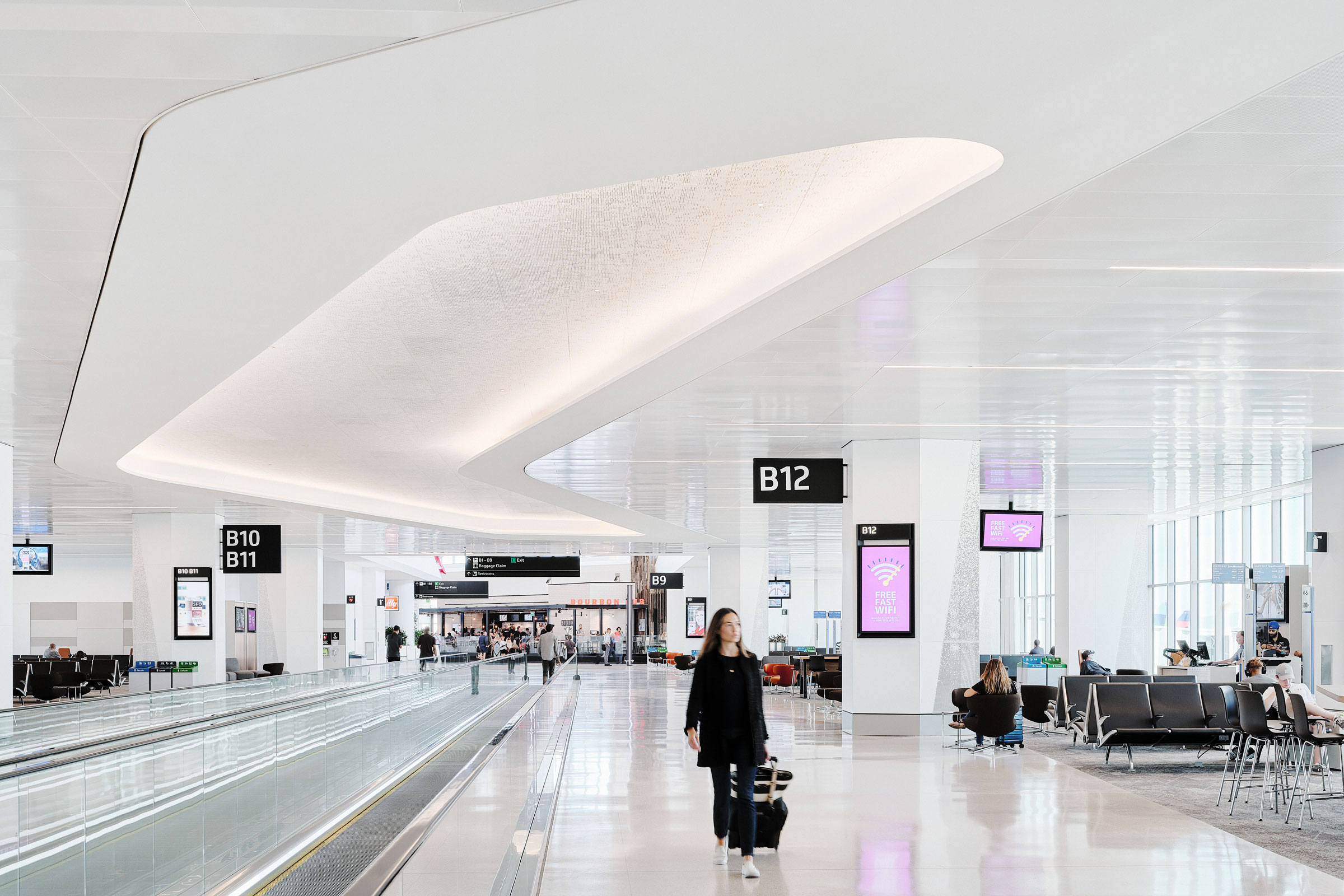
Controllable, dimmable, long-life LEDs were one of many features that helped the HKS-designed San Francisco International Airport Terminal 1 project earn LEED Platinum certification. Photo by Joe Fletcher
Another benefit of LEDs is that they can count towards LEED credits for projects pursuing LEED certification. This is perhaps best exemplified by the Interior Lighting – Indoor Environmental Quality credit, which looks to promote occupant comfort, productivity, and well-being through the provisioning of high quality lighting.
Projects can earn one point in this credit by meeting one of the following strategies or two points for meeting at least three of the following strategies:
- Controlling glare. All regularly occupied spaces must use light fixtures with a luminance of less than 7,000 candela per square meter between 45 and 90 degrees from nadir; there are many anti- and low-glare LED light fixtures available.
- Selecting high CRI index lights. All regularly occupied spaces must either use light sources with a CRI index rating of at least 90 OR light sources with a color fidelity index greater than or equal to 78 and a gamut index rating between 97 and 110; there are many high-CRI LEDs that offer ratings in the 90+ range.
- Providing lighting controls. Requires dimmable or multilevel lighting be provided for 90% of all regularly occupied spaces; most LED manufacturers offer dimmer-compatible options.
- Managing surface reflectivity. At least 90% of all regularly occupied spaces must use interior finishes with a surface reflectance greater or equal to 80% for ceilings and 55% for walls.
LED lighting can also help earn LEED credits in the Energy & Atmosphere category by helping projects reduce their energy consumption and optimize energy performance.
18. Help Earn Tax Credits
While there aren’t any tax benefits or incentives designed specifically for LEDs, installing energy-efficient lighting alongside other appliances and products can help commercial buildings—a designation that typically includes warehouses, retail buildings, libraries, apartment buildings with 4+ floors, office buildings, government-owned buildings, parking garages, industrial buildings, and public universities—qualify for the following tax deductions and benefits:
- Section 179D. A partial tax credit that falls under the Energy Efficient Commercial Buildings Deduction and may be applied to lighting upgrades dating as far back as 2006; allows projects that have reduced their exterior/interior lighting energy usage by at least 25% to deduct $0.60 to $0.63 per square foot of lighting.
- QIP 100% Bonus Depreciation & Sec. 179. LED lighting that has been installed in non-residential buildings after the building has been in service may qualify for an immediate write-off using 100% bonus depreciation or Section 179; allows a company to immediately deduct the full cost of eligible investments instead of spreading the deduction over multiple years.
- Asset Retirement. Refers to the process of disposing an old asset (e.g. replacing outdated lighting with energy-efficient LEDs) off the books and taking a write-off for the remaining basis.
Note that you should always consult with a CPA or other tax professional to find out whether your business or property qualifies for these tax benefits, as every tax situation is unique.
Andrew Biro contributed to this article.

